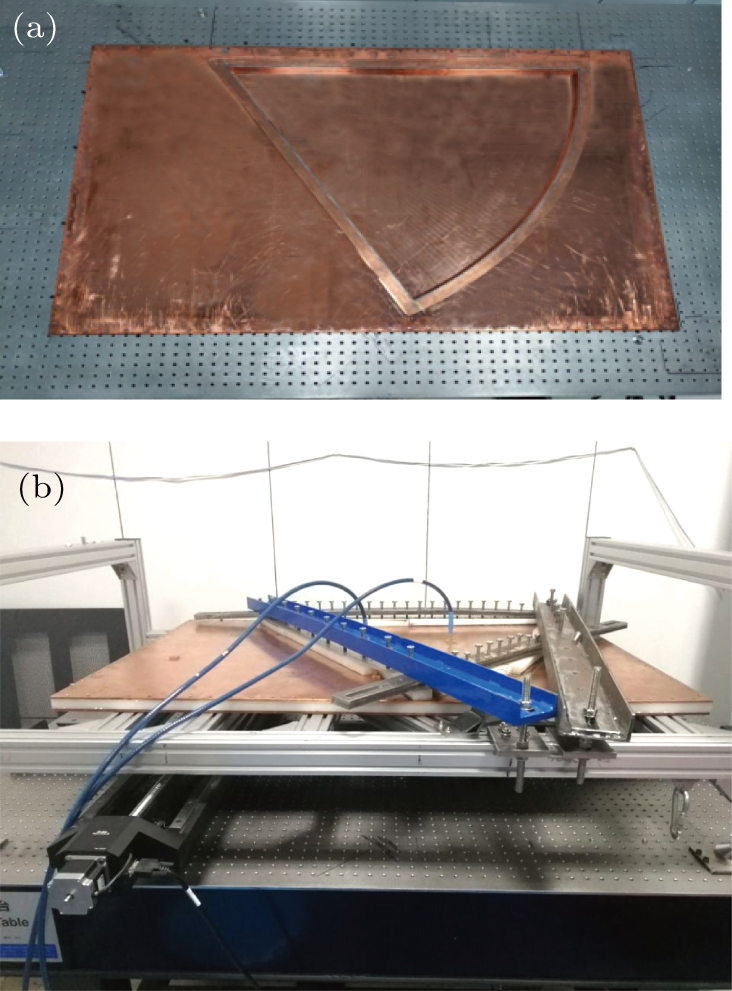|
Zhang Runzu1, 2, Zhang Weihua1, 2, Dietz Barbara1, 2, †, Chai Guozhi2, Huang Liang1, 2
|
|
(a) Photograph of the bottom plate and (b) the frame defining the walls of the microwave billiard (top) and of the resonator (bottom) which is composed of the frame squeezed between the bottom and top plates as sketched in Fig. 2. All three parts are made from copper. The size of the plates is 1260 mm×860 mm×5 mm. The frame has the shape of a 60° circle sector of radius 800 mm and height 20 mm corresponding to a cutoff frequency
f
max
≃
7.5
GHz
. In order to ensure a good electrical contact, all parts were squeezed together tightly with screw clamps as illustrated in the bottom figure. Furthermore, a rectangular frame of the same size as the plates and the same height as the frame, and the top and bottom plates were firmly screwed together along their edges through screw holes in order to improve the electrical contact. For the measurement of the resonance spectra, two antennas were attached to the resonator and coupled to the VNA via cables visible in the figure. The resonator rested on a frame and a positioning unit recognizable in the left bottom part guided the perturbation body with a magnet which was attached to it from underneath the resonator along the bottom plate.
|
